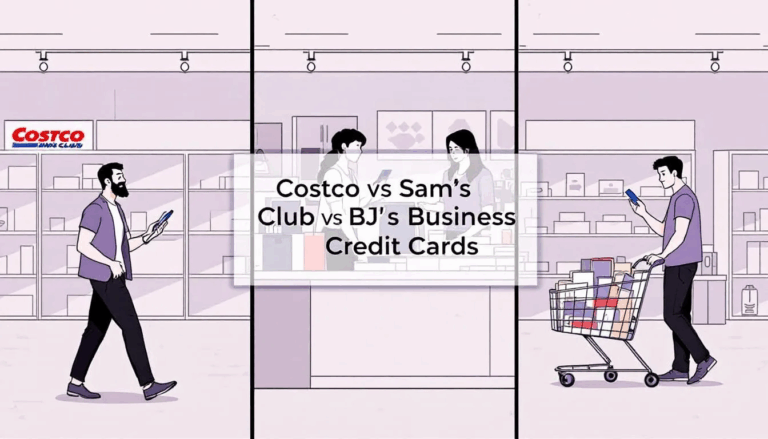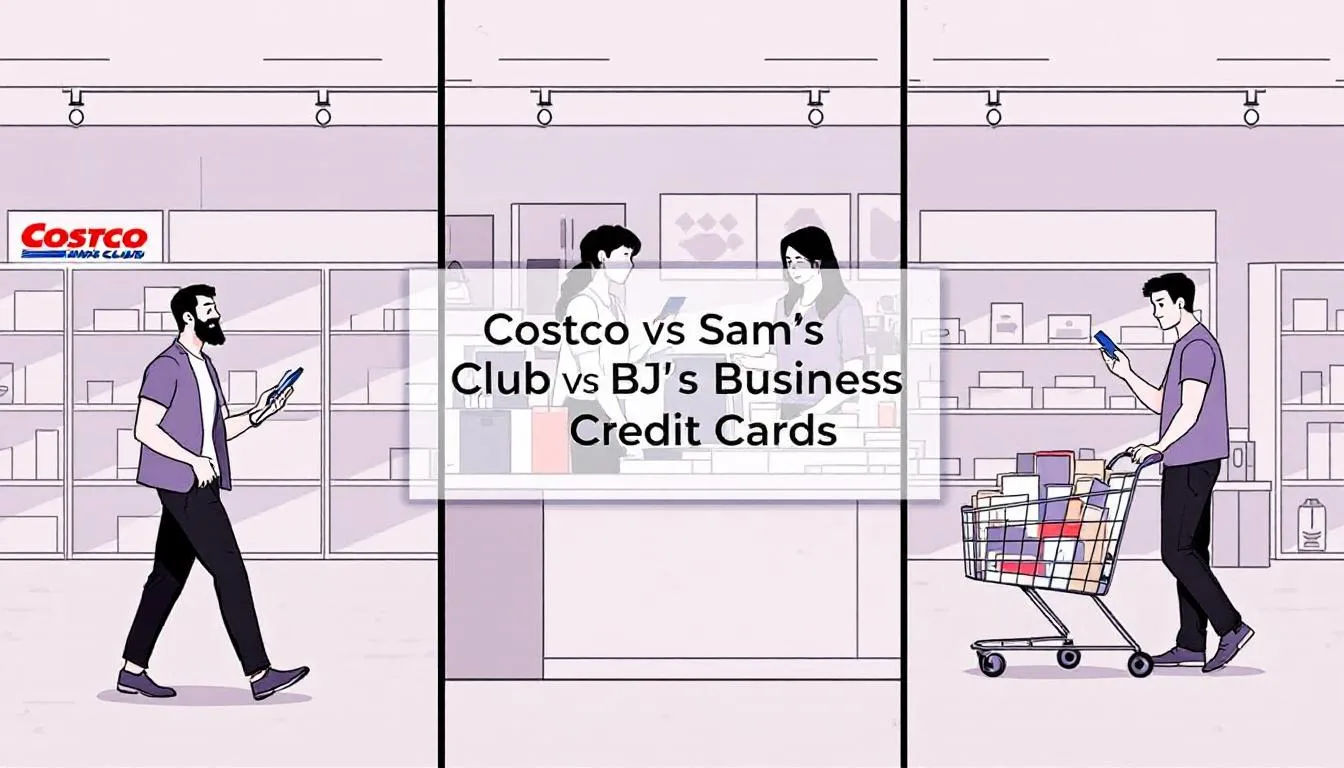What Is Franchising?
Before we define franchising, let’s establish the definitions of “franchisor” and “franchisee.”
The franchisor is the owner of the business, and the franchisee is the person who purchases the right to sell the franchisor’s products or services under the franchisor’s name and business model. The franchise business model allows a franchisor to increase market share or geographical reach with lower costs than traditional expansion methods.
The success rate for new businesses is low, making the franchise model appealing for stability and proven results. Franchise relationships depend heavily on trust and the franchisor’s enforcement of system standards. Following the franchisor’s business model and marketing plan can help ensure success.
Franchise contracts are temporary agreements that typically last between five and thirty years and do not signify business ownership by the franchisee. Under a franchise contract, the franchisor agrees to let the franchisee use the existing infrastructure and operational procedures.
However, the franchisee is in charge of maintaining the infrastructure and keeping those procedures going. The contract also specifies the time frame the franchisee retains the abovementioned rights.
Once the agreement is signed:
Franchise agreements are legally binding, and violations can result in penalties or termination of the franchise. They typically last between five and 30 years and have severe penalties for breach.
The franchisee undergoes an extensive training program to learn the franchisor’s operations. This includes the franchisor’s systems for ordering inventory, quality control, and recruiting and training new employees. The franchisee is then given a location (i.e., a franchise branch) to manage. Think of it this way: The franchisor sets the rules for day-to-day operations, and the franchisee follows them.
However, separate franchise agreements might offer varying degrees of control to the franchisee. For example, the franchisee may choose the number of employees on staff at certain times. If the location’s customers tend to have specific preferences, the franchisee may better prepare new employees through additional training exercises.
The franchise contract ensures that the franchisee does not alter the location’s appearance, products, and pricing structure. In other words, it prevents the franchisee from deviating from the franchisor’s proven business model or tarnishing its public image.
But this doesn’t mean you shouldn’t consult a business lawyer before signing a franchise contract. We’ll delve into the legal processes of purchasing a franchise later.
What Are The Fees For Buying a Franchise?
Franchising comes with at least three fees, starting with the one-time Franchise Fee. The next two – Royalty Fees and Advertising Fees – are usually deducted from the location’s monthly revenue. The specifics of each fee will be outlined in your franchise agreement, but here’s the general breakdown of all three:
1. Franchise Fee
This is the initial fee franchise owners pay after signing the franchise agreement. It can be viewed as the cost of the right to make money through the franchisor’s products, infrastructure, popularity, and business model.
The size of the franchise fee usually depends on the size of the franchise itself. If you want to purchase a top-rated franchise (i.e., McDonald’s), your franchise fee can easily exceed $100,000. On the other hand, a less popular franchise may carry a franchise fee closer to $20,000 or even $10,000.
However, in most cases, the franchise fee does not cover the cost of inventory, labor, supplies, and other resources needed to open a business. The franchisee must cover those costs on their own.
2. Royalty Fees
Franchisees pay royalty fees for the franchisor’s ongoing support and guidance, and most franchisors collect royalty fees every month, though some may collect every week. Royalty fees are a percentage of revenue that, depending on your contract, may fluctuate with sales volume. The typical royalty fee ranges from 4% to 12%.
3. Advertising Fees
One of the most significant advantages of franchising is not having to create and launch mass advertising campaigns. The franchisor takes care of that. And based on the franchise’s popularity, it’s safe to say they know what they’re doing.
How do franchises afford to market themselves so aggressively? A large chunk of these costs comes from advertising fees. This percentage is deducted from monthly revenue, though it’s considerably smaller than royalty fees.
How To Choose a Franchisor
Choosing the right franchise is very different from figuring out what business to start. One significant similarity, however, is that they both involve much research. And yes, money is an essential factor. Deciding on a particular franchise is similar to spotting a wise investment. The franchise you choose will be on track for massive success in the coming years and will appropriately reward its franchisees for the sacrifices they make.
Here are the main factors to consider when choosing which franchise to purchase:
1. What is Your Initial Investment?
In the fees section, we noted that the franchise fee does not cover several operational expenses. All franchises require substantial investments on behalf of the franchisee. You must contribute to the initial costs of getting the business up and running, recurring, and growth-related expenses. When the company needs new equipment or furniture, that money comes from the franchisee. Some franchises require their franchisees to replace certain pieces of equipment or furniture at certain intervals of time. You may have to pay for previously scheduled renovations as well.
Like the franchise fee, your initial investment may depend on the franchise’s popularity. Larger franchises tend to have more expenses and upkeep requirements. You can examine the initial investments of different franchises on Franchising.com or by contacting the franchise directly.
Many franchisees do not cover their initial investments or fees entirely alone. Many reputable companies offer franchise business loans, which are usually not as challenging to qualify for as startup business loans. Unlike entirely new businesses, franchisees can provide sufficient data to show the franchise’s overall growth in recent years. So, when researching options for franchise financing, ask each company if they offer lower rates and longer terms for particularly promising franchises. The total costs to start a McDonald’s franchise can range from $1.3 million to $2.3 million. Other franchises could have significantly lower start-up costs.
2. Is the Franchise a Household Name?
One of the biggest challenges of prospective franchisees is choosing a franchise brand that is recognizable enough to draw a steady stream of customers but not so popular that they can’t afford the franchise fee and the initial investment. A possible solution is to choose a franchise with a strong brand identity and a smart general marketing strategy instead of just a recognizable name. Leveraging a popular franchise often means tapping into an established customer base, but you should know the potential for market saturation in a given area.
This is also another way to gauge a franchise’s potential for growth. An entrepreneur should be able to spot an effective marketing strategy well before it achieves its desired result.
If you choose a franchise that is just becoming popular, you may have to invest in your own marketing efforts to supplement the momentum. Some aspiring franchisees work with franchise brokers to help them find the most suitable opportunity to achieve franchise success.
3. Where Will the Business be Located?
Countless businesses (especially restaurants) can attribute most of their success to their physical location. Even the most popular franchises are not immune to the dangers of a poor location, regardless of their external appearance or the quality of their products.
This is another similarity between franchises and traditional businesses. Both must conduct significant research before choosing their location. When studying different areas, you’ll have to consider the amount of competition nearby, the level of demand for the franchise’s products, and the type of people who make up most of the local population.
Choosing the correct location can be very difficult because while you don’t want to be in an area with too much competition, you also don’t want to be in an area with hardly any demand for your products. If you choose an area that doesn’t have many franchises, you may have to spend a lot of money marketing yourself to a demographic with no interest in franchises. Determine how many franchisees are operating in your target area.
For this reason, choosing the wrong location can be a losing battle.
4. Do You Have Relevant Experience?
Different types of franchises require different skill sets in franchisees. However, you’ll likely receive all the training needed to operate your branch. These courses will be much easier to comprehend if you have relevant experience. For this reason, you should probably choose an industry or business model you’re familiar with.
Different franchises also provide various levels of support. For example, one franchise might have lax training exercises and offer little guidance because its franchisees can usually run their branches. On the other hand, another franchise might regularly provide suggestions on increasing customer satisfaction or maintaining company culture.
Even if you have relevant experience, certain people prefer to follow the rules rather than be left alone. Supportive franchises can also help with common management-related issues, like how to deal with employee complaints.
5. Are Other Franchisees Happy?
You won’t know what it’s like to work with your desired franchise until you talk to their franchisees. These may be the only people who can give you the information you want regarding training, support, initial investments, etc. Other franchisees can give you tips on choosing the correct location and explain the differences between owning a franchise and owning a traditional business.
All franchisees have hardships, but you should be concerned if multiple franchisees seem highly dissatisfied with the franchisor’s treatment. They might feel like the franchisor isn’t providing enough support. Maybe the franchisor did not sufficiently clarify the magnitude of the initial investment and recurring expenses.
If the franchisee’s problems do not stem from the franchisor, they can probably be avoided by making different strategic choices. In other words, there’s no cause for concern if the franchisee is experiencing the same issues as any other business owner. The bottom line is that it’s critical to have honest conversations. The reality of running a business often differs from what you see on the outside.
6. What are Your Values and Goals?
You might not be particularly passionate about your desired franchise’s products. But that does not mean you should completely disregard your values and goals when deciding which franchise to purchase. Some franchises are more outspoken about their treatment of employees, the charities, political initiatives they support, or their role in improving their communities.
You should also consider your personal preferences for your daily routine. Do you prefer to get up early and finish work by mid-afternoon? Would you rather start in the evening and spend your nights at work? As the owner, would you prefer to serve customers alongside your staff or sit behind a desk, brainstorming new strategies?
Questions To Ask Potential Franchisors
Now that you’ve found a franchise worth pursuing, it’s time to solidify your decision with a formal evaluation. Start by checking the franchise’s page on the Better Business Bureau (BBB) for any complaints filed against the company. The next step only applies to the 13 states that regulate the sale of franchises, which include California and New York. These states’ residents can contact their state’s franchise authority and ask if their desired franchise has had any lawsuits, bankruptcies, or issues with state laws.
If everything checks out, you can move on to the first step in the official purchase of a franchise: contacting the franchise and explaining your plans. You can ask the franchise about any concerns raised during your preliminary research. You can even request copies of their business plan and operational manual. This will give you a clearer idea of their business model, general marketing strategy, and your day-to-day tasks. You’ll learn why this franchise is so successful and which elements you must focus on to maintain its reputation.
What To Look For In An FDD
Once the franchise understands you are serious about purchasing, it will probably ask your permission to send you its Franchise Disclosure Document (FDD), previously called a Uniform Franchise Offering Circular (UFOC). Some may still include that terminology.
The Federal Trade Commission established the Franchise Rule, which requires full disclosure of franchise investment risks and benefits. The FDD discloses prior litigation, financial performance representations, and other significant business risks.
According to federal law, someone who is even just slightly interested in purchasing a franchise can request an FDD. The Federal Trade Commission’s Franchise Rule states that you can ask for an FDD before spending any money on researching a franchise. A franchisor must provide the FDD to prospective buyers at least 14 days before they are asked to sign any contract or pay any money.
Inside the FDD, you’ll find all the information regarding costs, operational procedures, and the franchise’s financial history. This is where you’ll see the franchise-specific figures we alluded to in the fee section. In addition to the upfront franchise fee, the FDD contains the percentages for royalty and advertising fees and the total initial investment required by the franchisee. This should be followed by monthly operational expenses, clear distinctions about what the franchisor covers, and what you’ll have to pay for yourself.
The FDD will also outline the complete training process. You’ll learn which courses you have to attend, how long they are, and the requirements you must fulfill to become eligible for training. This may include obtaining (and paying for) specific licenses and permits.
Finally, the FDD will disclose any litigation or bankruptcies in the franchise’s history. And if you haven’t contacted any fellow franchisees yet, the FDD should give you a list of current and former franchisees accompanied by their contact information.
Work With An Accountant And Lawyer
As you can see, the FDD contains many crucial legal and financial documents. Most of it may be difficult to understand, no matter how many times you read it over. No aspiring franchisee should attempt to navigate an FDD without an accountant and a lawyer’s help.
Your accountant will calculate precisely how much money you’ll have to spend, both upfront and per month, to operate the franchise. After reviewing the franchise’s financial documents, your accountant will also reveal whether this specific franchise is a wise investment and whether or not you should seek franchise financing. For this reason, working with an accountant from the beginning of your preliminary research is highly recommended. Your accountant will likely tell you to request FDDs from several franchises. This will allow you to choose the most sensible investment based on your own financial standing.
Lawyers specializing in franchise law are experts at breaking down FDDs into layman’s terms, i.e., language the average person can understand. Before you sign a franchise contract, you must know precisely what you agree to (what you can and cannot do as the business owner). So, when meeting with your lawyer, explain your personal goals as an entrepreneur. This way, your lawyer can tell you if an FDD allows you to run and grow the business as you desire.
Franchising: Is This The Right Path For You?
It’s safe to say that adaptability is an essential skill for a franchisee. Rather than creating their own products and business model, franchisees must adapt to the franchisor’s proven strategies. This means learning how to suit the preferences of the franchisor’s suppliers, enforce the franchisor’s company culture, and promote the franchisor’s brand identity.
In this sense, a franchisee’s role is more comparable to that of a student than a teacher. There’s a good chance that the more experienced franchisees you speak to will say, “As long as you follow directions, you’ll be just fine”. To decide if franchising is right for you, you may have to ask yourself which is more important: stability/security or the freedom to run your own business however you see fit? Both can be very financially rewarding, requiring much hard work and sacrifice. It’s the kind of hard work and sacrifice you’re most comfortable with that will lead you to your decision.
Part 2: How To Franchise Your Business
Franchising can be one of the most lucrative ways to grow your business. Due to franchisee investment, it can offer faster growth than organic growth.
Contrary to popular belief, you don’t have to set up multiple franchises nationwide to build a successful franchise. Regardless of your success, you probably won’t be able to expand on this level for at least several years. This isn’t even the most challenging part of the franchising process. The real work takes place in the beginning when you’re learning how to turn your business into a franchise in the first place.
Many tasks must be completed before you’re ready to open additional locations. That’s why it is often recommended that aspiring franchisors do not look too far ahead. It takes a very long time to franchise a business, so you might as well put all your energy and focus into each step, rather than wondering why you haven’t started expanding yet.
In part two of this guide, we’ll review every step involved in franchising your business and explain why each is so important.
What Does It Mean To Franchise Your Business?
Franchising refers to the act of licensing intellectual property so that it can be shared with franchisees or the owners of your additional locations. This intellectual property can include proprietary knowledge, your business model, operational procedures, and trademarks for specific products or services.
Once you’ve obtained a franchise license, aspiring franchisees must seek permission to open locations under your business’s name and brand identity. Though the franchisees are technically the owners of the additional locations, you retain control over the franchisor’s brand and intellectual property.
Thus, it’s your responsibility to provide franchisees with an operating manual, brand exposure (via mass advertising), management training, and general guidance on how to run the business. The franchise operations manual serves as a comprehensive guide for managing franchise locations.
In exchange for these resources (which traditional entrepreneurs usually lack), the franchisee pays an upfront franchise fee and a separate initial investment, which helps cover certain recurring operational expenses. The franchisor also deducts a percentage of the franchisee’s monthly revenue to supplement advertising and ongoing franchisee support costs.
However, as mentioned earlier, aspiring franchisors must undergo a lengthy process before recruiting their first franchisee.
Here’s how to get started:
Step 1: Document The Business Model For A Franchise
Step one for franchising your business is documenting your entire business model. This is a lot harder than it sounds. When you’ve been running a business for a long time, the day-to-day routine comes naturally to you. It’s almost like muscle memory. Rather than approaching tasks step-by-step, you rely on your experience and intuition to make the right decision.
Franchisees, however, won’t have your experience and intuition. For this reason, you must write down how you manage every aspect of your business, from ordering materials to monitoring cash flow to dealing with customers. You cannot assume that anything you do is “common sense” or leave out even the most minute details of your management tactics.
Franchisees are essentially your students
Your instructions must be so clear that virtually anyone can understand them and can never be misinterpreted. After all, your franchisees will likely have different personalities. However, every location must meet the same standards, especially regarding customer service and the quality of your products or services.
Though you will also provide personal support to franchisees, your written documents should still give them all the information they need to run the business successfully. In many ways, you want to do what you can to protect franchisees, as their success translates to your success.
Not sure if your instructions are detailed enough? If so, you should talk to other franchisors as well as franchisees. Franchisors can tell you how they developed their operations manual, whereas franchisees can reveal whether or not they feel that their franchisor’s operations manual was sufficiently informative.
Step 2: Is Your Business Ready For Franchising?
As you compile the contents of your operations manual, you may find that certain aspects of your management style are difficult to explain. This is another reason why the operations manual is step one. You evaluate your business model to see if a stranger can replicate it. The truth is, some businesses are not suited for franchising.
So, if you’re not confident that another person will be able to replicate your business model, you may be better off foregoing this expansion strategy. The franchising process is already arduous enough. It will only be more stressful if you’re always worried about going down the wrong path.
Evaluate Your Success
After evaluating your business model, the next step is to assess your success. Businesses should only consider opening up additional locations when there is too much demand for the first location to meet independently. Your company should have a strong reputation along with a strong customer base. New franchises often rely on word of mouth to gain new customers. People who have already heard of your company must associate it with the great success you’ve had thus far.
Also, think about why your business is so successful in the first place. Do your products or services fill a particular role in your local community? Do many of your customers visit your business because they know you? If your business’s success is directly attributed to your local following, you might not see the same progress if you open locations in different areas.
Conduct Market Research
Market research is the only way to get a clear picture of demand. This will show you whether your industry is growing or stagnating and if your target market is spending more or less money on franchises like yours. Which franchises in your industry are finding the most success at the moment?
Market research also provides a snapshot of the success of your future competitors. Are many similar new franchises already trying to appeal to your target market? How will you differentiate yourself from their brand identities?
As you can see, a great deal of market research revolves around your future competitors. This round of research can help you make business-based decisions on how many franchises are feasible and develop the business tools to help franchisees succeed.
You may not have thought of these businesses as direct competitors before you decided to pursue franchising. But now that you are taking on a new level of competition, you’ll probably need to put more effort into strengthening your brand identity and recognizing what makes your business special. New franchises can only stand out if they understand the unique value they provide to their target market.
Make Sure You Have the Required Resources
Franchising requires a significant investment of both time and money. The operations manual mentioned above is just one of many written resources you’ll have to create for your franchisees. And regardless of how clear your instructions are, you’ll have to make yourself available whenever new franchisees need personal support.
One of your most important (and time-consuming) responsibilities as a franchisor is creating your Franchise Disclosure Document (FDD), which we’ll explain in depth later on. You’ll need a lawyer to review this document since it outlines the legal terms of your relationship with your franchisees.
For example, you want to be able to provide defined operating expenses for accurate budgeting. So, if you intend to franchise your business, set aside enough time and money to embark on this epic journey.
Prepare for a Major Lifestyle Change
Earlier, we alluded to the student/teacher dynamic between franchisors and franchisees. Though you may have experience interviewing and training employees, franchisees require another level of vetting and guidance. New franchisors must be prepared to ask and answer many questions and help new franchisees prepare their locations for business.
As a result, you’ll probably devote more time to these responsibilities than your usual day-to-day routine. Rather than completely controlling one business, you’ll have partial control over several companies. This lifestyle change can frustrate entrepreneurs, so be prepared to step out of your comfort zone as you begin opening locations.
Step 3: What Is a Franchise Plan?
Every successful business requires a detailed business plan. The same goes for franchises. To achieve your expansion goals, you must create a franchise plan.
This is where market research comes in handy. Based on what you’ve learned about your target market, the most sensible strategy might be to open up just a few locations in your county. Your franchise plan should explain how many locations you plan to open and the timeline for each.
No, you’re not expected to predict the exact number of locations you will open up throughout your lifetime. For this reason, your franchise plan only has to include a few years’ worth of locations at most.
The number of locations isn’t as significant as the logic behind your initial locations’ projected success.
Step 4: Creating a Franchise Disclosure Document
The Franchise Disclosure Document (FDD) is the main section of the franchise agreement documentation distributed to aspiring franchisees. According to federal and state law, aspiring franchisees must receive the franchise agreement at least 14 days before signing and becoming an official franchisee. Franchisors must regularly update their FDDs to reflect the current state of the franchise system.
As of 2020, 10 states require franchisors to file FDDs once or annually. They are:
In 13 states, however, you must file an FDD to franchise your business. So, in the following states, you are not a franchisor unless you file an FDD beforehand:
- New York
- Illinois
- Maryland
- California
- Washington
- Hawaii
- North Dakota
- Minnesota
- Wisconsin
- Michigan
- Indiana
- Virginia
- Rhode Island
Every state has its own requirements for what must be included in an FDD. This brings us back to the franchise lawyer we alluded to earlier on. An FDD outlines the aspects of running the business that the franchisee is responsible for and those handled by the franchisor (we’ll explain the specifics in the next section).
Franchise lawyers can be expensive. However, you can access the same services through cheaper online legal resources.
Composing the FDD
FDDs typically begin by stating the four main fees franchisees require: franchisee fee, initial investment, royalty fees, and advertising fees. This should be followed by the recurring operational expenses covered by each party (equipment, supplies, inventory, etc.). Though the franchisee may be responsible for several major expenses, it’s the franchisor’s job to provide the means for acquiring those expenses. This is perhaps one of the most significant advantages of buying a franchise. You don’t have to look for vendors, as the franchisor has already established these partnerships.
If you’re unsure how much you should charge franchisees, look up the fees for other franchises in your industry. Thankfully, this information is widely available online.
With most franchises, deductions from advertising fees only go towards mass marketing campaigns for the entire brand. Thus, franchisees can launch their own local marketing campaigns to draw attention to their specific location. The FDD must specify which marketing tools franchisees can use and the guidelines for not compromising the brand’s reputation.
Another critical element of the FDD:
Another element is the training requirements of franchisees. Most franchises require aspiring franchisees to attend several courses. The length and subject matter of these courses is outlined in the FDD, along with the licenses and permits necessary for opening the location.
Franchisees are also typically required to meet a certain threshold for net worth. As a new franchisor, you may want to set this requirement on the lower side as an incentive for your first batch of franchisees.
Submit Your FDD to Your State
After writing your FDD, the next step is to submit it to your state (if necessary) and await approval. The 13 franchise registration states are known to be the most stringent with their FDD requirements. If your FDD is not approved, the state will explain the changes you must make before submitting again.
State approval means your FDD is ready to be distributed to aspiring franchisees. But before you do that, you must compose another lengthy franchisor document: your operations manual.
Step 5: Writing a Franchise Operations Manual
It’s time to put all that documentation you performed in Step One to use. The challenge with operations manuals is balancing setting rules and giving your franchisees the freedom to make their own decisions for specific tasks. However, most franchisors would likely recommend leaning more towards the former approach.
As mentioned, franchising is reserved for aspiring entrepreneurs who prefer following clear-cut rules instead of developing their own strategies. For this reason, franchisees will expect operations manuals to be as detailed as possible, with very little room for interpretation.
If you provide loose instructions for certain procedures, be prepared to teach those procedures to franchisees personally.
Step 6: Register Your Trademarks
Franchises rely on the strength of their brand to grow and maintain success. Your additional locations will not succeed if your brand does not have a favorable reputation within your target market. But until you file for a trademark with the US Patent and Trademark Office, you don’t technically own your business’s name, logo, and slogan. Only after you’ve trademarked this intellectual property can you charge franchisees for using it.
Step 7: Register a Separate Franchise Entity
As if you haven’t already filed enough paperwork, new franchisors must register their franchises as separate business entities. Legally speaking, this will be a new company even though it shares the same name as your original company.
Registering your franchise as a new company allows you to open a separate bank account for all franchise-related finances. This is where you’ll deposit the money you receive from franchisees (franchise fee, royalty fees, etc.).
Step 8: How Do I Find Franchisees?
Now that your legal documents are out of the way, you can finally move on to finding franchisees. This is accomplished through the same means you used to get your original business off the ground: good old-fashioned marketing.
Selling a new franchise, however, requires a very different strategy than marketing a brand-new business. Unless you consider yourself a marketing wizard (which many entrepreneurs do), the most sensible approach might be to enlist the help of an expert. Franchise consultants get paid to attract franchisees to new franchisors. Yes, this service isn’t exactly cheap. However, many successful franchisors would likely admit that they would never have been able to find their first franchisees on their own.
Step 9: How Do I Vet Franchisees?
It’s only natural to be extremely excited when you meet your first aspiring franchisee. This is what all that hard work was for, right? But just because someone wants to be your franchisee doesn’t mean this person is qualified to be your first franchisee.
Every aspiring franchisee must be thoroughly vetted to ensure they possess the personality and work ethic to run your specific business type. Since franchisees don’t have to create their own business models and marketing strategies, many assume franchising is reasonably straightforward. They don’t understand the tremendous pressure of representing someone else’s brand.
So, before meeting your first franchisee, develop an objective screening process that determines whether or not this person deserves your trust. Franchise systems often require franchisees to pay an initial franchise fee and ongoing royalties. Ensure franchisees have the financial resources for this investment.
Ensure the franchise agreement accurately reflects your brand values, expectations, and goals. The franchise agreement can stipulate terms for renewal, termination, and transfer of rights.
Send Your FDD to Your Potential Franchisee
Once you’ve decided that an aspiring franchisee is a good fit, the next step is to send them your FDD. Federal law states that franchisees must receive FDDs at least 14 days before signing the official franchise agreement.
But when considering the FDD’s length and importance, 14 days doesn’t seem like a long time. And you don’t want your aspiring franchisees to feel rushed into this life-changing decision. So, you should probably give them additional time to have your FDD reviewed by an accountant and lawyer. Don’t be surprised if the aspiring franchisee’s lawyer contacts you to make sure both parties have the same understanding of the FDD’s terms.
Step 10: Support Your New Franchisee
Though your franchisees will undergo a training program before opening their locations, this isn’t the only training they will receive. Franchisors provide initial training and an operating manual to franchisees. As the franchisor, you must also provide ongoing training to help franchisees further understand your management tactics and core values.
It’s very similar to the integration of a new employee. Lots of people are capable of following directions. But they’ll be able to follow them much more effectively if they know why those directions exist in the first place.
Franchisors often receive payment for providing training, equipment, or business advisory services. Franchisees may incur significant costs to rent, build, and equip an outlet. Royalties for franchises can range between 4.6% and 12.5%, depending on the industry.
Great franchisors provide franchisees with systems, tools, and support to meet brand standards. Franchisors may provide site selection and development support for franchisee locations.













